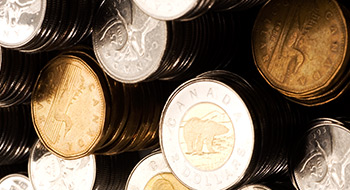

It’s been seven years since the recession, but we have yet to see a significant global turnaround.
“Through the next 12 months, we’re thinking the global economy will grow by about 3%, compared to the previous norm of 4% to 4.5% real growth,” says Luc de la Durantaye, first vice president of global asset allocation and currency management at CIBC Global Asset Management. He manages the Renaissance Optimal Inflation Opportunities Portfolio.
So, “we’ve been monitoring to what degree central banks can continue to act.”
Read: Why Canada’s economy is underperforming
Already, he explains, “there has been significant ammunition deployed by various central banks around the world. Despite quantitative easing, foreign exchange intervention and the deployment of zero-bound interest rates, we’re still getting what we would call disappointing results.”
Below is a rundown of the possible options available to major central banks across the globe.
The BoC
Domestically, we haven’t seen any QE yet, and the BoC’s policy rate is at 50 basis points, says de la Durantaye. “So there’s still marginal room to lower interest rates in Canada.” But investors would worry if we experience another relapse of the global economy, he predicts, “[since] we’ll have less and less policy flexibility going forward.”
U.S. Federal Reserve
“In terms of what’s left in the cupboard, the Fed is still thinking of raising interest rates, and they could backtrack,” he adds. “That would most likely mean increasing QE efforts.”
Bank of Japan
The BoJ’s bond purchases for QE now represent 60% of the size of Japan’s economy, or 60% of Japan’s GDP, he says. “This is a fairly large amount. By comparison, the same government bond purchases for other central banks, such as the U.S. Federal Reserve and the ECB, represent less than 25% of GDP. So, the BoJ is most likely to hit its quantitative limits first.”
Read: Unemployment inches up to 7.1% in September
European Central Bank
The ECB is only six months into its QE, so it could expand that program, suggests de le Durantaye.
Overall, “the fiscal environment is unhealthy for many major economies. Governments still have high debt-to-GDP ratios, so there’s less leeway from a fiscal [spending] perspective.”
Tips for investors
These days, diversification is key when it comes to hedging portfolios, says de le Durantaye.
Read: Canadian economic recovery will be unconvincing: Report
He suggests clients look to “highly rated government bonds, even though they’re not offering attractive rates of returns.” People can also consider gold, “[especially] if they’re questioning the ability of central banks to preserve the stability of economies and currencies.”
As well, investors can consider adding exposure to high-quality defensive companies that have strong balance sheets. “There will always be demand for basic services.”
